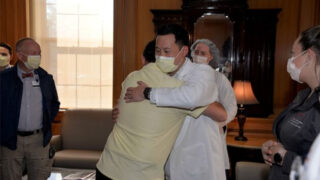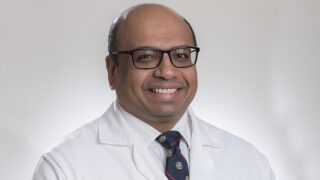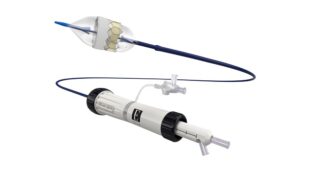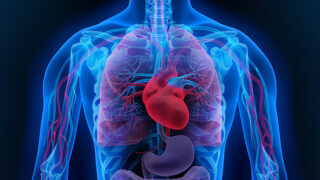ECMO
ECMO Critical Care
The extracorporeal membrane oxygenation (ECMO) program at Albany Medical Center is the largest one in the Capital Region.
ECMO became familiar to many people during the Covid-19 pandemic when it was critical for so many patients who had failed on ventilators. This most advanced life support therapy is currently used regularly to help critically ill and injured patients with heart and lung failure recover. It is often used for patients recovering from heart surgery, or as a bridge to further treatment.
This bypass machine is used on a temporary basis over weeks or months by doing the work of the heart and lungs. Not all patients survive and the procedure has side effects.
How It Works
Lung failure is traditionally treated by using a ventilator. Ventilators use positive pressure to push air into the lungs and facilitate gas exchange, thus removing carbon dioxide and providing more oxygen to the patient. Ventilators are a vital treatment tool, but in some very sick or injured patients, the increase in pressure can strain the lungs.
When ventilation and all other treatments have failed, ECMO is the last line of treatment. ECMO requires surgery for placement. ECMO allows the lungs and heart to rest by using a machine to oxygenate blood outside the body.
With ECMO, blood bypasses the heart and lungs, allowing the organs to rest and heal.
The Specialists You Need
ECMO is a complicated and highly specialized procedure that requires an ECMO team, including specially trained physicians, nurses, respiratory therapists, and more. This team is available at Albany Medical Center.
Our medical specialists also train residents and fellows on the use of ECMO.
Conditions We Treat
These are examples of situations in which ECMO could be recommended:
- Respiratory failure
- Cardiac arrest
- Congenital heart conditions
- Pulmonary embolism of the lungs
- Acute Respiratory Distress Syndrome (ARDS)
- Respiratory or heart failure caused by an infection like pneumonia or Covid-19
- Heart or lung failure resulting from an accident
Back to Cardiothoracic Surgery



